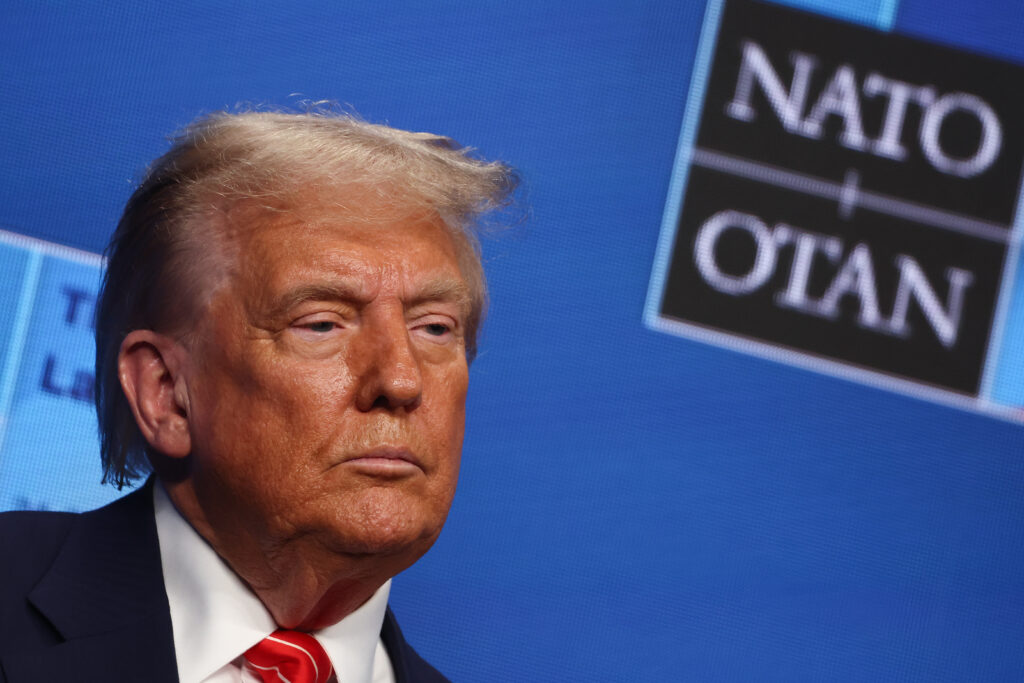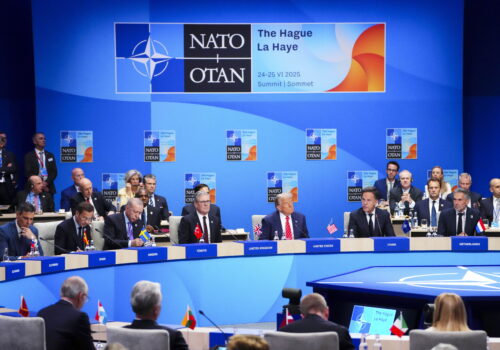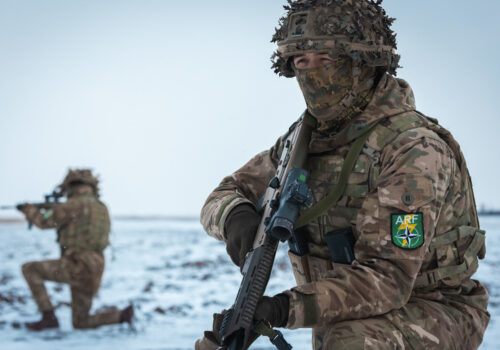JUST IN
“It’s not a rip-off.” That’s how US President Donald Trump described NATO after this year’s summit in The Hague, during which Alliance members agreed to the Trump administration’s demand to raise defense spending to 5 percent of gross domestic product over the next decade, a major commitment to burden sharing across the Alliance. In the summit’s unusually terse communiqué, NATO allies also reiterated their “ironclad commitment” to collective defense under Article 5. Absent from the communiqué was any mention of how Russia’s war against Ukraine should end, Kyiv’s potential NATO membership, or the future of US force posture in Europe. What do the commitments allies made at The Hague—and what they left unsaid—signal about NATO’s future? Our experts share the burden of offering their insights below.
TODAY’S EXPERT REACTION BROUGHT TO YOU BY
- Ian Brzezinski (@IanBrzezinski): Senior fellow at the Atlantic Council’s Scowcroft Center for Strategy and Security and former US deputy assistant secretary of defense for Europe and NATO policy
- Rachel Rizzo (@RachelRizzo): Nonresident senior fellow at the Europe Center
- John E. Herbst (@JohnEdHerbst): Senior director of the Council’s Eurasia Center and former US ambassador to Ukraine
The drive to 5
- The agreement to reach the 5 percent spending target by 2035 “promises to significantly increase allied, particularly European, military capacities,” says Ian, calling the agreement “a clear success for Trump and for the Alliance as a whole.”
- Allies committed to spend 3.5 percent on core defense and 1.5 percent on defense-related items, which Ian says is “critical to operationalizing NATO’s new regional defense plans to deter Russian aggression.”
- However, Rachel notes, the wording of the defense-spending commitment in the summit communiqué “may leave just enough wiggle room for some allies, such as Spain, to opt out,” as Spanish Prime Minister Pedro Sánchez has said that his government will not pursue the 5 percent target.
- “The question now,” adds Rachel, “is whether European leaders are willing to expend the political capital necessary to convince their publics that defense is worth spending on, especially if it comes out of other social spending budgets.”
Sign up to receive rapid insight in your inbox from Atlantic Council experts on global events as they unfold.
The war in Ukraine
- “The summit yielded no new substantive action against Russian President Vladimir Putin’s aggression” in Ukraine, says Ian, noting that US Secretary of State Marco repeated his opposition to new sanctions and Trump “publicly balked on providing Ukraine a new tranche of security assistance,” even as Russia escalates its brutal attacks.
- John has a more optimistic assessment, arguing that “the results of the week are mixed, but on balance positive” for Ukraine.
- The negatives: The Alliance ditched plans for a new strategy toward Russia “to avoid setting off the US president,” John notes, and Ukrainian President Volodymyr Zelenskyy was relegated to the summit’s side events. The positives: Trump met with Zelenskyy and indicated an openness to send Ukraine more air defense; and the communiqué directly linked the new defense spending commitment to “the Russian threat to NATO,” which drew the ire of the Kremlin.
- Nevertheless, John tells us, Trump is still “reluctant to put pressure on the Kremlin” to end its war on Ukraine, and a Russia sanctions bill in the US Senate with bipartisan support “is still on hold, waiting for a nod from the White House.”
Uncertainty ahead
- Ian points out that while the communiqué reaffirmed allies’ commitment to Article 5, Trump said little “about the future of US force posture in Europe,” as his administration has signaled that it wants to prioritize the Indo-Pacific and the Western Hemisphere.
- This is especially important for European allies to know, Ian argues, since any “significant drawdown could profoundly affect the distribution of allied force commitments that underpin NATO’s new regional defense plans.”
- While Trump had clear wins, Ian tells us, “what was not left clear was the future of US commitment to European security.”
Further reading
Wed, Jun 25, 2025
Experts react: NATO allies agreed to a 5 percent defense spending target in a low-drama summit. Now what?
New Atlanticist By
The Alliance summit was notable for what was said and done, especially about defense spending—but also for what was left off the agenda.
Mon, Jun 2, 2025
For NATO in 2027, European leadership will be key to deterrence against Russia
Issue Brief By
NATO lacks the operational integration, logistics, and joint force capabilities needed to quickly counter Russian mass and tempo near its borders. With the United States increasingly focused elsewhere, how can the Alliance retain military superiority in 2027 without overreliance on US military might?
Mon, Mar 31, 2025
Why NATO’s Defence Planning Process will transform the Alliance for decades to come
Issue Brief By
NATO’s successes over the last seventy-six years are the result of constant adaptation, and the Alliance is now going through its most profound changes since the end of the Cold War.
Image: USA President Donald Trump during the press conference at the NATO Summit in The Hague, Netherlands on June 25, 2025. (Photo by Jakub Porzycki/NurPhoto) REUTERS




